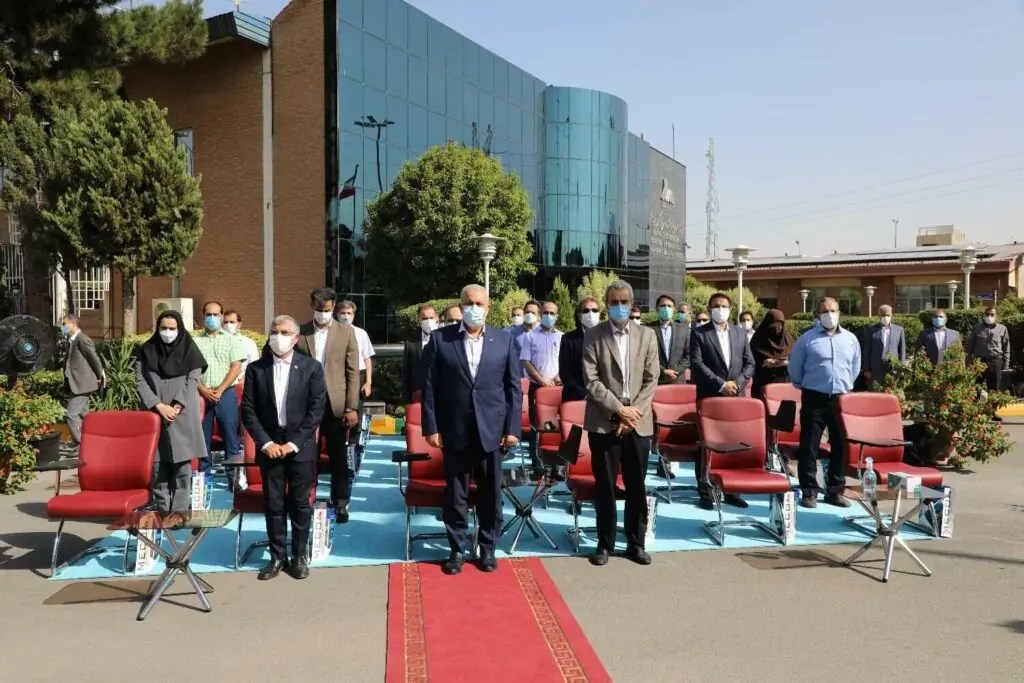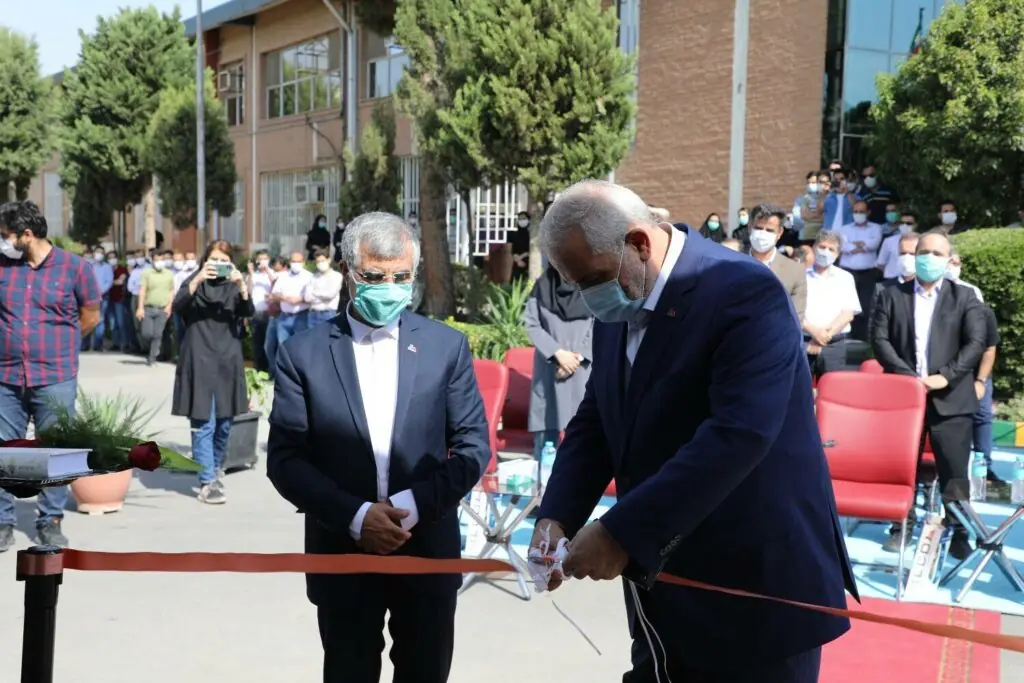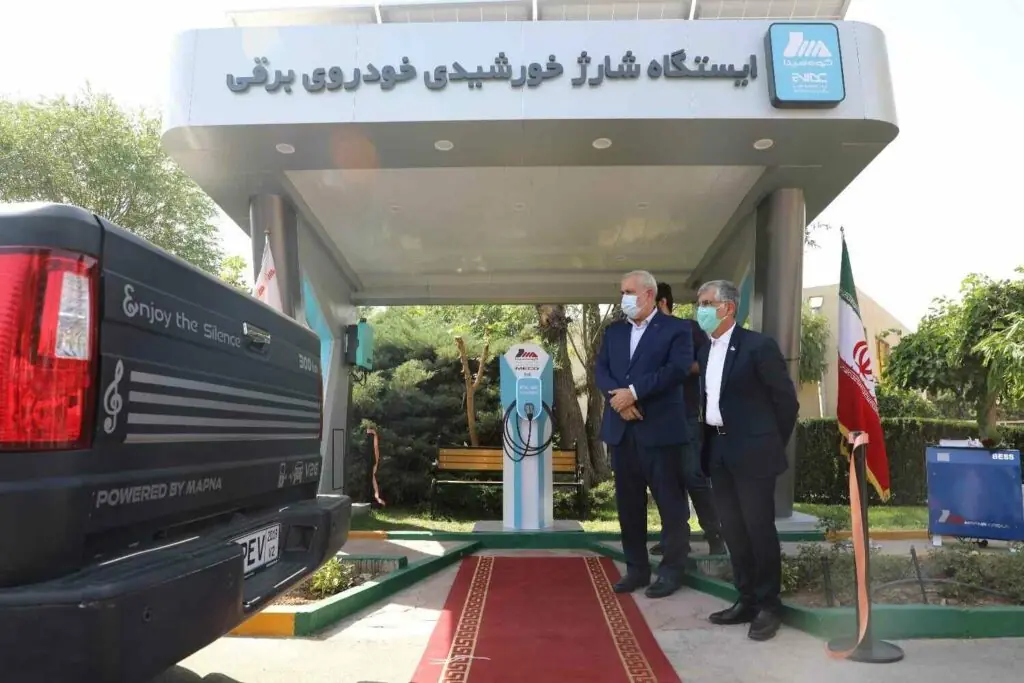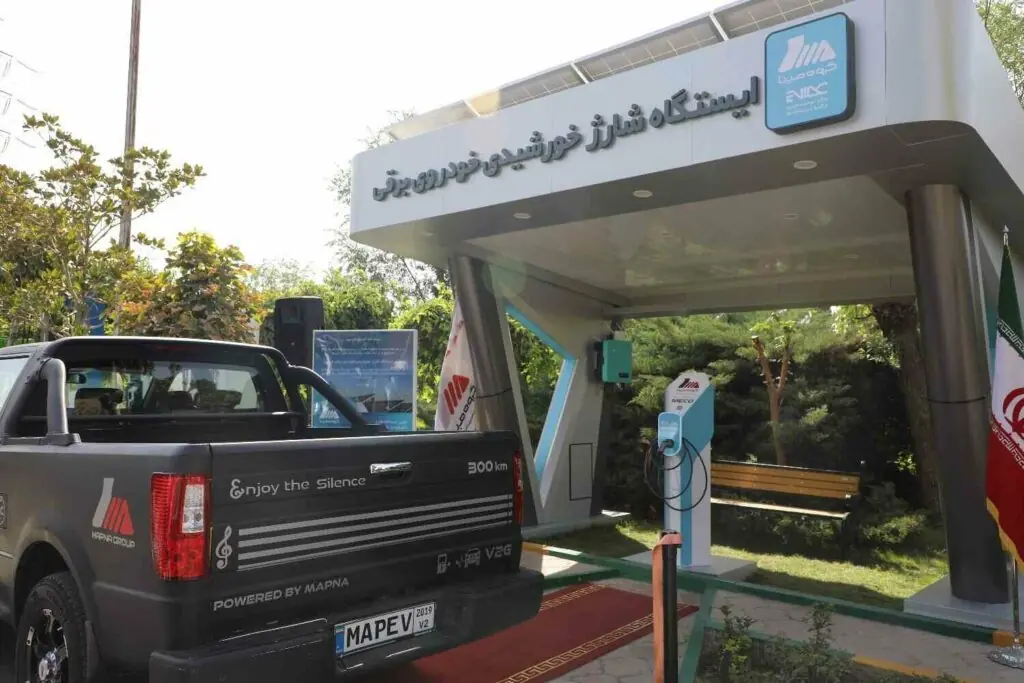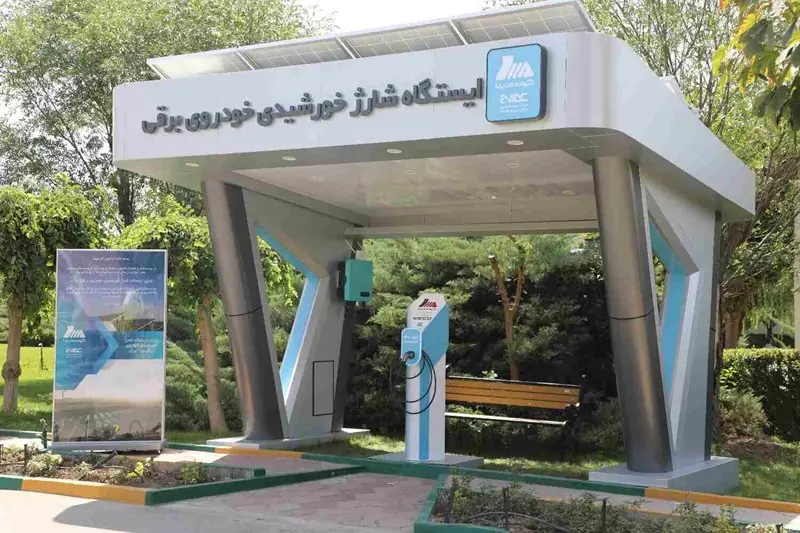MAPNA Group unveiled its first solar energy-based EV charging station in Fardis County, Alborz Province, on Sunday, July 18.
The station has been developed by the Group’s Electric and Control Engineering and Manufacturing Company (MECO).
The solar-powered station has a capacity of about 4 kW and is connected to an EV charger with a 3.7 kW discharge capability.
Adel Dameshghi, Manager of EV & Infrastructure Development Center (EVIDC) at MAPNA Electric & Control, Engineering & Manufacturing Co. (MECO), said that the company is now producing 200 solar-powered EV charging stations, with plans to install the environmentally-friendly stations in all Iranian provinces.
He noted that the rise in the demand for electric vehicles has highlighted the importance of reaching reliable charging infrastructure to accommodate the rapid public adoption of this means of transportation.
“We are seeking to transfer the renewable energy generated on wind and solar farms to the slow and fast charging stations in cities; this can help both curb energy consumption and reduce air pollution,” the EVIDC head added.
MAPNA Group is also seeking to expand its electrification horizons to the foreign markets, according to Dameshghi.
“Talks are underway with regional countries, including Pakistan, Armenia and Iraq to offer MAPNA’s solar energy-based EV chargers in their markets.”
Renewables Key to Reach Sustainable Energy
MAPNA CEO Abbas Aliabadi referred to electrification of the transportation fleet as a vital move to prevent environmental damages caused by industrial activities.
However, he pointed out that achieving such a goal necessitates dependable approaches, such as renewable energy sources, to assure long-term energy security.
The new station can assist in achieving V2G and V2H technologies, meaning that it can either store the extra electricity or feed it into the household or national grid.
The terms V2G and V2H stand for “vehicle to grid” and “vehicle to home” respectively. These technologies enable energy to be pushed back to the power grid from the battery of an electric car. Drivers, for example, can utilize solar energy to charge their automobiles while at work, then return home at the end of the day and feed the excess power back into their household grid.
In recent years, MAPNA has prioritized the development of EV infrastructure following a government policy to shift from fossil fuels to green energies, and in line with the global trend toward curbing pollution.
Several electric vehicle prototypes, electrification subsystems, and various charging infrastructures have been introduced thus far by MAPNA. The Group has also begun building charging stations in several provinces, and has just unveiled its first all-electric bus.
Iran’s first EV charging station was set up at Tehran’s Milad Tower in May 2019 by MAPNA. Built over 700 square meters, the station includes a 43-kilovolt alternating current charger, plus a fast charger working under the CHAdeMO Protocol, a trade name of a quick charging method for electric vehicles, which suits Japanese and South Korean EV brands such as Kia, Nissan and Mitsubishi. The station also includes a 4.7-kV slow charger and a 5.5-kV charger that can be used by electric motorcycles.
According to Aliabadi, Mashhad is the second city to house an electric charging station following the pioneering launch in Tehran.
Aliabadi expressed MAPNA’s readiness to collaborate with car manufacturers and urban taxi organization to upgrade the country’s transport system with the help of EV technology.
“It is high time we invest in EVs,” he said, urging local carmakers to pay more attention to EVs.
